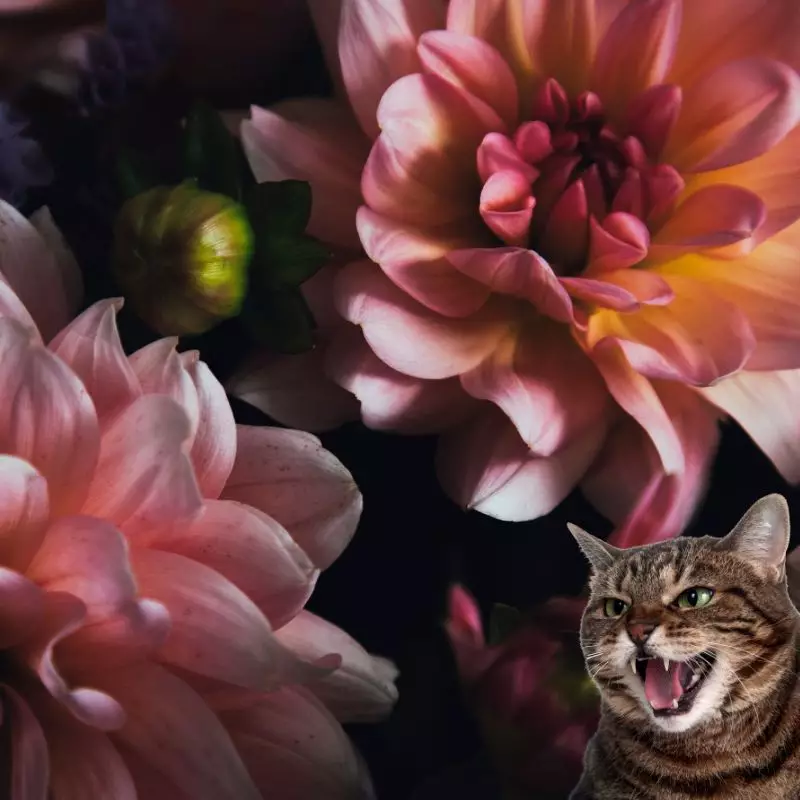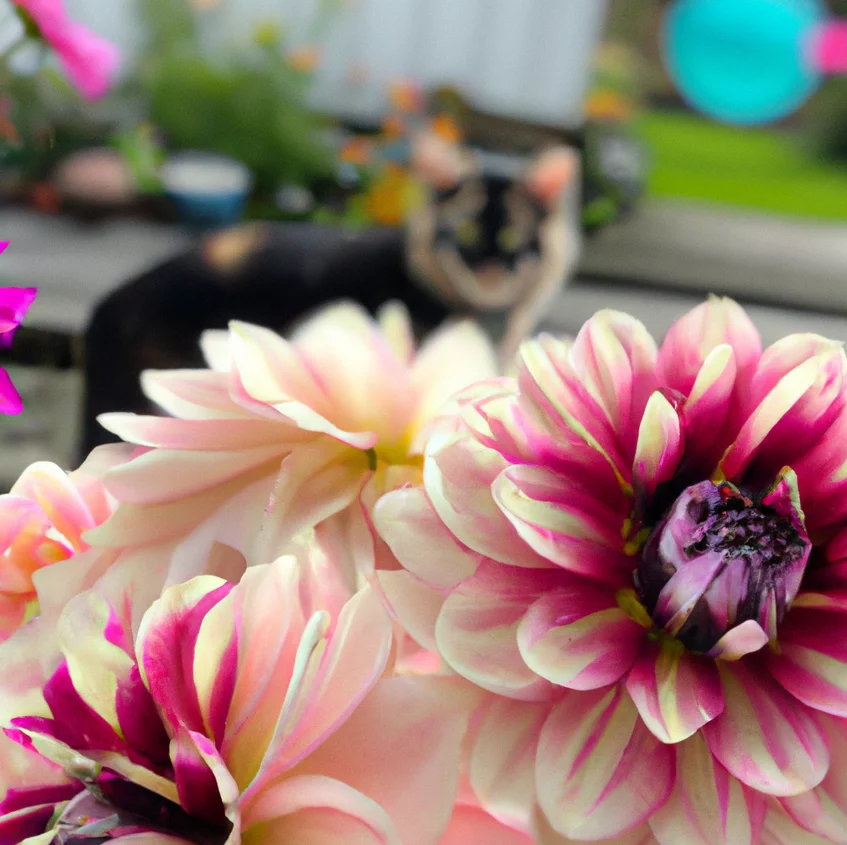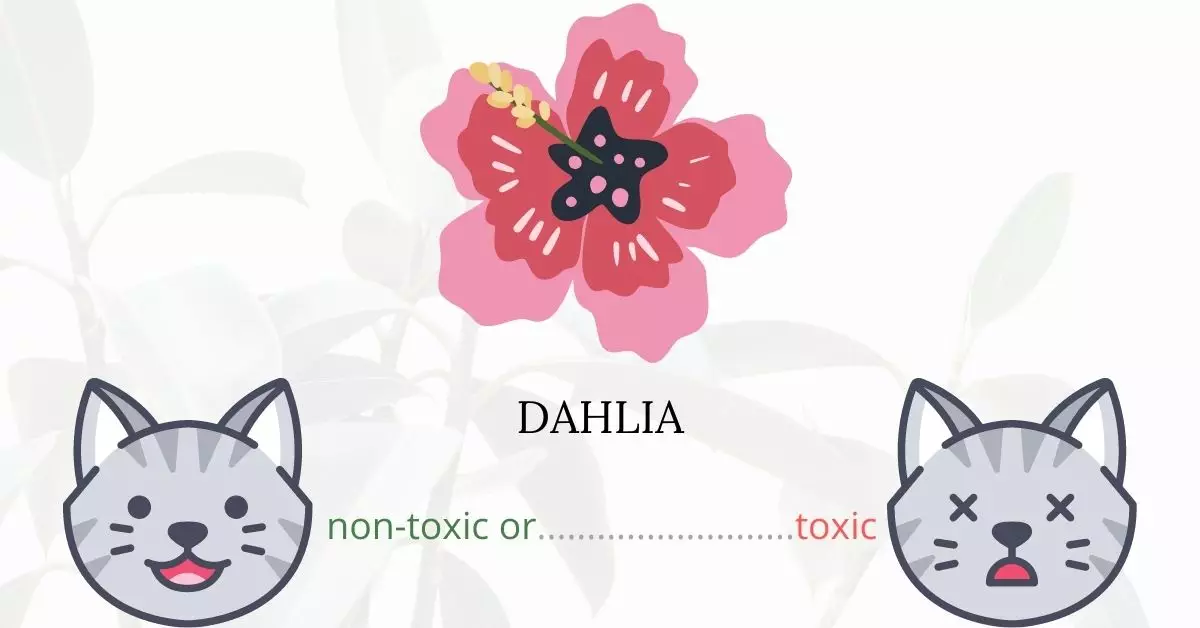Yes, dahlias can be toxic to cats. When ingested, dahlias may lead to symptoms such as vomiting, lethargy, and skin irritation in cats. Dahlias are a part of the Asteraceae family, which also includes chrysanthemum and chamomile. Given this relation, it is believed that they might contain substances similar to essential oils and acid irritants. While the exact toxic principles of dahlias remain unidentified, it’s known that acids can trigger digestive disturbances, and essential oils may result in cognitive and motor function impairment, as well as dermatitis.
This article is crafted in collaboration with a team of experienced DVMs (doctors of veterinary medicine). With their expertise, we ensure that our readers receive accurate and up-to-date information about the potential risks associated with various plants, specifically dahlias in this context. Additionally, our findings are reinforced by thorough research on high-authority websites such as ASPCA and PetMD, ensuring comprehensive and trustworthy guidance on every plant discussed.
Clinical Signs of Dahlia Poisoning in Cats

When a cat comes into contact with, smells, or ingests parts of a Dahlia plant, certain clinical signs may manifest due to the plant’s toxic components. Here’s a breakdown of the common signs and their underlying causes:
- Nausea: This is often one of the initial reactions when a cat consumes the Dahlia. The cat’s digestive system recognizes the foreign, potentially harmful substance, leading to a nauseous sensation.
- Appetite Loss: As with nausea, the ingestion of the Dahlia can cause discomfort in the stomach, making the cat less inclined to eat.
- Vomiting: A direct response to the body trying to expel the ingested toxic substance, vomiting can help rid the body of the irritant and is a clear sign of distress.
- Lethargy: The ingestion or exposure to the plant’s toxic substances can cause a decrease in energy levels, making the cat less active and responsive.
- Loss of Coordination: The potential presence of essential oils and other irritants in Dahlias can impact the cat’s neurological system, leading to difficulties in movement and coordination.
- Skin Irritation: Direct contact with the Dahlia can cause irritation due to the potential acid irritants and essential oils present in the plant.
- Inflammation of the Skin: Continued exposure or severe cases of contact can lead to redness, swelling, and soreness, indicating inflammation.
While Dahlia poisoning is generally mild, it is always recommended to consult a veterinarian if your cat exhibits any of these symptoms to ensure their well-being and swift recovery.
First Aid and Treatment of Dahlia Poisoning in Cats

The vet will be able to restore any fluids lost due to vomiting as well as neutralize any toxins present in the body by injecting fluid into the cat’s bloodstream. In effect, the skin irritation will fade quickly, and the cat’s energy levels should increase slightly as a result. Other prescription medicines may be also given by the vet as needed in your cat’s situation.
Recovery from Dahlia Poisoning in Cats

The symptoms of dahlia poisoning often linger for 48 hours. After that, most cats will heal quickly and be back to their old selves in about a week. Normally, the vet will not require a follow-up visit but it is imperative to call him if any symptoms show up again or your cat had a relapse.
Prevention of Dahlia Poisoning in Cats
It is best to avoid cultivating and bringing Dahlia into your home. If there is a known presence of dahlias or other toxic plants in your surroundings, keep your cat from going in those areas, or much better, keep them busy and safe indoors.
If you love plants but have cats at home, check out these lists:





